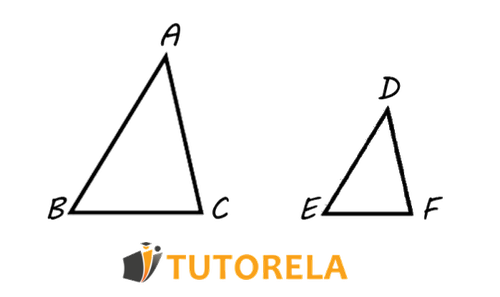Similar triangles are triangles whose three angles are equal respectively and also the ratio between each pair of corresponding sides is equal. Two similar triangles are actually larger or smaller versions each other.
The ratio of similarity is the ratio between two corresponding sides in two similar triangles.
To prove similarities between triangles, we will use the following theorems:
- Angle-Angle (A.A): If two angles are equal respectively between two triangles, then the triangles are similar.
- Side-Angle-Side (S.A.S): If the ratio of two pairs of sides is equal, and also the angles between them are equal to each other, then the triangles are similar.
- Side-Side-Side (S.S.S.): If for two triangles, the ratio of the three sides in one triangle to the three pairs in the other triangle is equal (similarity ratio), then the triangles are similar.
For similarity of polygons we will define it this way: if for two polygons all angles are equal and there is a constant ratio between two corresponding sides, then the polygons are similar.
Intuitively, just like similar triangles, also two similar polygons are actually an enlargement or reduction of each other.
